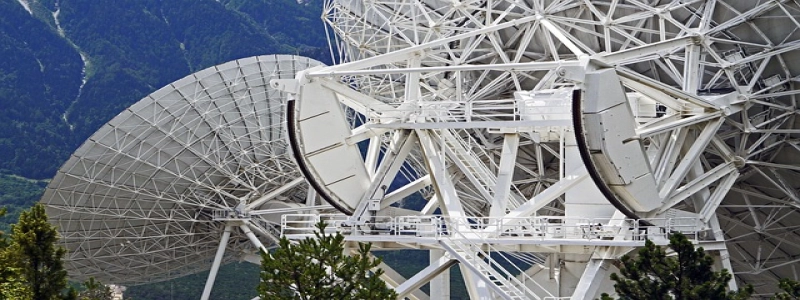الطاقة التشتت الأشعة السينية الطيفي (اي دي اس): A Comprehensive Analysis
أنا. مقدمة
أ. Background
ب. Purpose of the Study
ثانيا. Theory of Energy Dispersive X-ray Spectroscopy
أ. Principle of EDS
ب. X-ray Generation and Detection
ثالثا. الأجهزة
أ. Electron Microscope
ب. Energy-dispersive X-ray Spectrometer
1. X-ray Detector
2. Pulse Processor
3. Energy Analyzer
رابعا. Data Collection and Analysis
أ. Sample Preparation
ب. Data Acquisition
ج. Spectrum Interpretation
الخامس. تطبيقات اي دي اس
أ. توصيف المواد
ب. Electron Beam Microanalysis
ج. Nanoparticle Analysis
السادس. مزايا وقيود EDS
أ. مزايا
ب. محددات
سابعا. خاتمة
أ. Summary of EDS
ب. Potential Future Developments in EDS
أنا. مقدمة
أ. Background
الطاقة التشتت الأشعة السينية الطيفي (اي دي اس) is a powerful analytical technique used to determine the elemental composition and distribution within a material.
ب. Purpose of the Study
The purpose of this article is to provide a comprehensive understanding of EDS, including its principle of operation, instrumentation, data collection, analysis techniques, and various applications.
ثانيا. Theory of Energy Dispersive X-ray Spectroscopy
أ. Principle of EDS
EDS works based on the principle of X-ray analysis, where high-energy electrons interact with the sample, causing the emission of characteristic X-rays. These X-rays are then captured, analyzed, and used to determine the elemental composition of the sample.
ب. X-ray Generation and Detection
X-rays are generated when the high-energy electron beam strikes the atoms in the sample, causing the removal of inner shell electrons. The vacancies created are filled by outer shell electrons, resulting in the emission of characteristic X-rays. These X-rays are detected using a solid-state detector, typically a silicon drift detector.
ثالثا. الأجهزة
أ. Electron Microscope
EDS is commonly employed in conjunction with electron microscopes, more specifically scanning electron microscopes (SEMs) or transmission electron microscopes (TEMs). These microscopes provide high-resolution imaging capabilities, allowing for the detailed analysis of the sample.
ب. Energy-dispersive X-ray Spectrometer
The energy-dispersive X-ray spectrometer comprises three main components: the X-ray detector, pulse processor, and energy analyzer. The X-ray detector captures the emitted X-rays, the pulse processor converts the detected X-rays into electrical signals, and the energy analyzer separates and measures the energy of the X-rays.
رابعا. Data Collection and Analysis
أ. Sample Preparation
Prior to analysis, samples need to be prepared carefully to ensure accurate results. This may involve polishing, mounting, and coating the sample to make it suitable for analysis under the electron microscope.
ب. Data Acquisition
Once the sample is prepared, the EDS system is used to acquire data by scanning the electron beam across the sample surface. This results in the collection of X-ray spectra, which contain information about the elemental composition of the sample.
ج. Spectrum Interpretation
The acquired X-ray spectra are analyzed using specialized software, which compares the energy and intensity of the captured X-rays to known standards. This allows for the identification and quantification of the elements present in the sample.
الخامس. تطبيقات اي دي اس
أ. توصيف المواد
EDS is widely used for material characterization, determining the elemental composition of a wide range of samples, including metals, سيراميك, polymers, and geological materials.
ب. Electron Beam Microanalysis
EDS can be used to analyze the distribution of elements within a sample at the microscale level, providing valuable information about the elemental mapping and heterogeneity of materials.
ج. Nanoparticle Analysis
EDS is particularly useful in the field of nanotechnology, where it can be employed to study and analyze the elemental composition of nanoparticles and nanomaterials.
السادس. مزايا وقيود EDS
أ. مزايا
EDS offers several advantages, including its non-destructive nature, high sensitivity, and ability to analyze a wide range of sample types.
ب. محددات
EDS has some limitations, such as the inability to detect light elements, limitations in quantitative analysis, and the need for careful sample preparation.
سابعا. خاتمة
أ. Summary of EDS
Energy Dispersive X-ray Spectroscopy is a valuable technique for elemental analysis that is widely used in various scientific fields, including materials science, geology, and nanotechnology.
ب. Potential Future Developments in EDS
The future of EDS holds promise for improvements in sensitivity, detection limits, and quantitative analysis techniques, which will further expand its applications and enhance its analytical capabilities.








